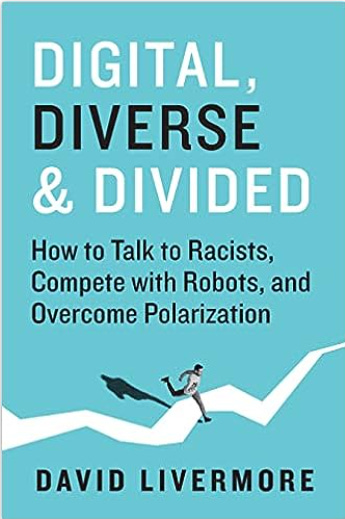Why Social Capital in DEI?
Here are two ideas from my book, Reconstructing Inclusion: Making DEI Accessible, Actionable, and Sustainable and other texts I leaned on in writing it. In addition, I’ve included one quote, a book recommendation, and a video or article that has inspired or influenced me and hopefully will resonate with you, too. (That’s ✌🏿+ 💡📚➕).
Page 207
Why Social Capital in DEI?
So what’s the point of talking about social capital in a book about diversity, equity, and inclusion? To understand that, we first need to define social capital, which requires looking at a few different perspectives because there’s currently no recognized standard definition. In fact, there are some who quasi-reject the term as it is most popularly laid out by Harvard political scientist Robert Putnam in his book Bowling Alone. Putnam introduced me to social capital, and he defines it based on the definition of L. J. Hanifan, who was a state supervisor of rural schools in West Virginia back in 1916.
His version—and thus Putnam’s version—contained commonly agreed upon elements such as goodwill, fellowship, reciprocity, and social and civic engagement among individuals and families who are part of a social unit. Putnam states, “Social capital refers to connections among individuals—social networks and the norms of reciprocity and trustworthiness that arise from them.”
In that sense, social capital is closely related to what some have called “civic virtue.” The difference is that “social capital” calls attention to the fact that civic virtue is most powerful when embedded in a dense network of reciprocal social relations. A community of virtuous isolated individuals is not likely to be rich in social capital.
Author Margaret Heffernan, on the other hand, defines social capital as “the trust, knowledge, reciprocity and shared norms that create quality of life and make a group resilient. In any company, you can have a brilliant bunch of individuals—but what prompts them to share ideas and concerns, contribute to one another’s thinking, and warn the group early about potential risks is their connection to one another. Social capital lies at the heart of just cultures: it is what they depend on—and it is what they generate."
Photo by Ashkan Forouzani on Unsplash
Page 196
Cultural Values
What are cultural values? Cultural values are the predominant archetypes of how significant numbers of people from a respective country or region function. These archetypes can be perceived as stereotypical in the negative sense. This perception would be true if we made the fundamental attribution error of assigning limiting descriptions to all people that represent a particular geography or culture. In the case of how we will look at cultural values, these are more like what cross-cultural psychologists Joyce Osland and Allan Bird call “sophisticated stereotypes”—broad relative differences based on empirical data from research on various cultures.
Sophisticated stereotypes are helpful. They allow for people to gain a general understanding of how and why people from different cultures may respond situationally in particular ways. These models present a way of explaining contrasting behaviors across cultures. A conceptual understanding could be extracted by learning about one’s own and others’ cultural generalities as presented in the table on the following page replicating that of Osland and Bird. The authors recommend that students and employees learn about these common cultural dimensions.
These are critical components of self- and other-awareness in business settings. My experience when first engaging with a cultural values assessment was that my scores in many domains were not consistent with Western, Anglo norms but were more in alignment with the norms of Confucian Asia. I am now more cooperative than competitive, lean toward collectivism instead of individualism, and consider the long-term impact of decisions more than I do the short-term. This was a bit surprising at first. However, once I thought about my influential mentors and friends, many of whom are from Confucian Asia, it made sense. I have, for a considerable amount of time, been willing to be influenced by them.
💡A Quote
“One should go easy on smashing other people’s lies. Better to concentrate on one’s own.”
― Iris Murdoch
📚A Book
Photo Credit: Amazon.com
Digital, Diverse, and Divided: How to talk to racists, compete with robots, and overcome polarization by David Livermore
➕A Video
Why modern American creates fragile children | Jonathan Haidt
I hope this was helpful. . . Make it a great day! ✌🏿
In this episode of the ‘Reconstructing Inclusion’ podcast, I am joined by three key members of the Diversity Atlas team. Gain insights into how inclusive data sets and nuanced categorizations enable a richer understanding of cultural nuances and support strategic decision-making in your DEI efforts.





